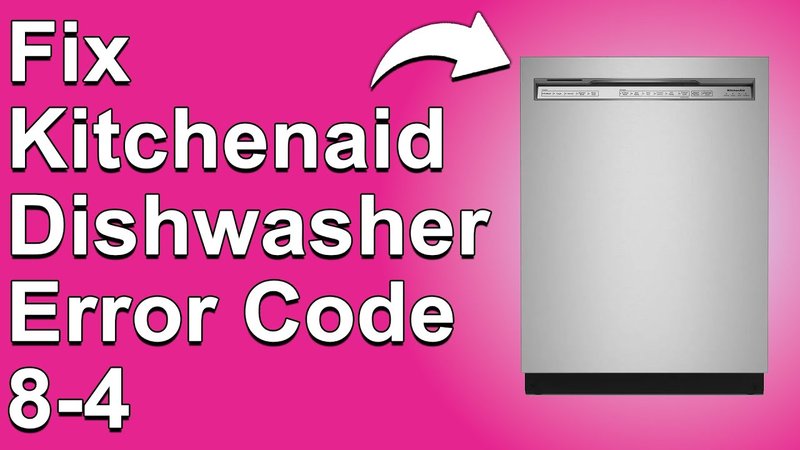
The “OE” error code on your KitchenAid dishwasher usually indicates a problem with the drainage system. Imagine your dishwasher as a small kitchen assistant that’s got a job to do — cleaning your dishes. Now, if the water isn’t draining properly, it’s like your assistant trying to mop the floor with a bucket that just keeps refilling. Not very efficient, right? That’s why understanding what this error means can make your kitchen duties a whole lot smoother.
Understanding the Drainage System
So, what happens inside your dishwasher when you press that start button? Picture it as a mini car wash with spray arms and detergent jets, all working to scrub away at those stubborn bits of food stuck on your dishes. But all that dirty water has to go somewhere, and that’s where the drainage system comes in. If the water doesn’t drain properly, your dishwasher can’t perform at its best, leaving you with a load of unclean dishes.
The drainage system typically includes a pump, hoses, and filters. The pump acts like the heart of the system, pushing the dirty water out through the hoses and filters. If any part of this system fails, you’ll likely see the “OE” error code. This usually means there’s a clog or a blockage stopping the water from flowing out as it should.
Here’s a fun analogy: imagine trying to sip your favorite drink through a straw, but halfway through, someone pinches the straw shut. You’d hate that, wouldn’t you? Well, your dishwasher feels the same when there’s a blockage in its drainage.
Common Causes of Blockages
You might be wondering, what could possibly block the drainage system? The usual suspects are bits of food, grease, or even small pieces that might have broken off from your dishes. These can slowly accumulate over time, forming a stubborn blockage. It’s like a slow-building traffic jam on the highway – at first, a few cars cause a little slowdown, but eventually, more and more pile up, and then everything comes to a halt.
Another common culprit is the dishwasher filter. This component catches leftover food and debris, so it doesn’t get into the drain. However, if the filter isn’t cleaned regularly, it can get clogged. Imagine trying to breathe through a mask that’s covered in dirt – that’s how your dishwasher feels when its filter isn’t clean.
Sometimes, the issue isn’t even inside the dishwasher; it might be with the plumbing. If the kitchen sink drain is clogged, the dishwasher can’t drain properly either. This is like trying to pour water into a glass that’s already full – there’s nowhere for the water to go!
Detecting and Fixing the Issues
Okay, so now we know what might cause the “OE” error, but how do we fix it? The first step is to check the basics. Start by cleaning the filter, which is usually located at the bottom of your dishwasher. Remove any visible food particles or debris, and rinse it under warm water.
Next, inspect the drainage hose. This is usually a flexible, plastic tube that runs from the dishwasher to the kitchen sink or garbage disposal. Make sure it’s not kinked or bent, as this can prevent water from flowing out. You might need to remove the hose and flush it out to clear any internal clogs.
Finally, if you suspect the issue is with your home’s plumbing, you might need to contact a plumber. They can help clear any blockages in the kitchen sink drain, ensuring smooth drainage for your dishwasher. Think of it as getting a traffic expert to clear up that highway jam we talked about earlier.
Preventative Tips
So, how can you prevent the “OE” error from happening again? It’s all about regular maintenance and good habits, much like keeping your car running smoothly with regular check-ups and oil changes.
First, make it a habit to scrape and rinse your dishes before loading them into the dishwasher. While modern dishwashers are designed to handle some food debris, keeping it to a minimum reduces the risk of blockages. Secondly, clean the filter regularly—ideally once a month—to prevent buildup.
You should also periodically check the drainage hose for any signs of damage or blockage. Ensuring it’s properly installed and not bent helps maintain a clear path for the water to exit.
And there you have it! With these simple steps and preventative measures, you’ll not only decode the mystery of the “OE” error but also keep your KitchenAid dishwasher running smoothly for many more dishwashing cycles to come.